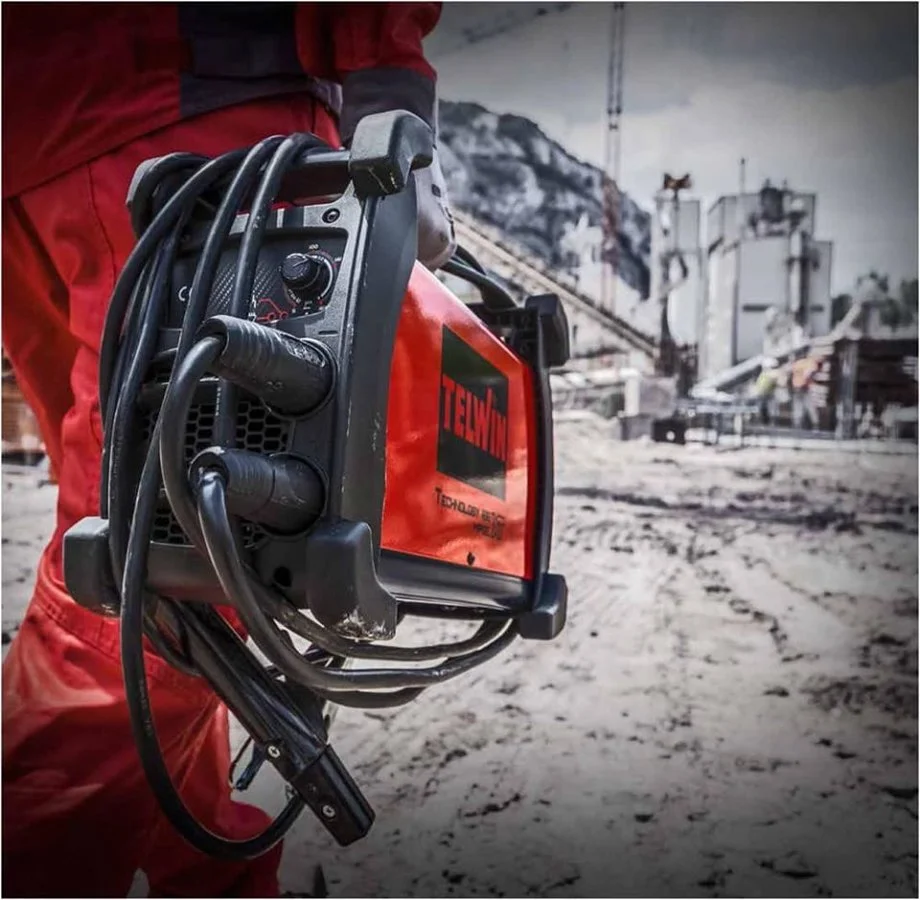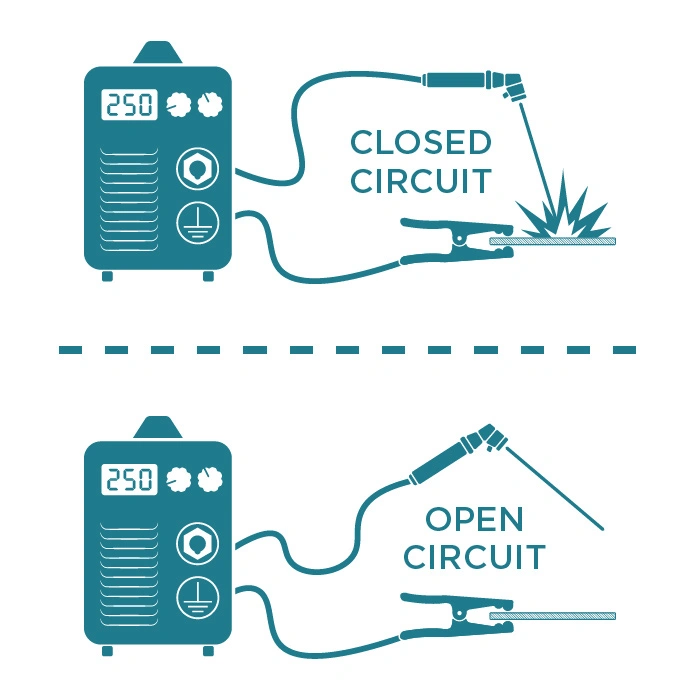Welding is an essential process used in several industries, and safety is a top priority in this field. One of the safety measures used in welding is the Voltage Reduction Device (VRD), so many wonder what is VRD in welding.
VRD is a safety feature that helps reduce the risk of electric shock in welders. It works by reducing the open-circuit voltage of the welding machine, which can be dangerous if touched. By using VRD, welders can work with greater safety and confidence.
In this article, we will explore the concept of VRD in welding and its importance in ensuring the safety of welders.
What Is VRD in Welding, And How Does It work?
A Voltage Reduction Device (VRD) is a safety device used in welding machines to reduce the risk of electric shock. It works by lowering the open-circuit voltage (OCV) of the welding machine to a safe level.
When a welding machine is turned on, it produces an OCV that can be dangerous if you touch the welding holder or electrode. The high no-load voltage can range from 50 volts to over 100 volts, depending on the welding machine’s make and model.
This high voltage can be harmful, especially in wet or damp conditions, as it can cause electric shock, injury, or even death.

A VRD detects when the welding machine is not in use and then reduces full output of the OCV to a safe level, typically less than 15 volts. The device achieves this by using a switching mechanism that controls the welding machine’s output voltage. This switching mechanism typically uses a relay, activated by a low-voltage signal from the welding machine’s control circuit.
When the welding machine is turned on, the VRD detects the OCV and activates the relay, which reduces the voltage to a safe level. The VRD continues to monitor the OCV and adjusts the voltage accordingly if the welding machine’s status changes.
What is OCV (Open Circuit Voltage) In Welding?
Open Circuit Voltage (OCV) refers to the voltage produced by a welding machine when the welding arc is not active or has been disconnected. OCV is also known as no-load voltage or standby voltage. It is measured in volts and represents the maximum voltage that the welding machine can produce.
OCV is produced by the power source of the welding machine, which may be a transformer, an inverter, or a generator.
The power source works by converting the input voltage to a higher or lower voltage as required by the welding process. This higher or lower voltage is then delivered to the welding electrode through the welding cable.

The OCV is necessary for the welding process as it helps initiate the arc between the welding electrode and the workpiece. When the welding rod is brought close to the workpiece, natural resistance from the OCV causes an electric spark to jump between them, igniting the arc. This arc produces heat, which melts the welding electrode and fuses it with the workpiece, creating a weld.
The OCV can vary depending on the type of welding machine and its settings. It can range from 50 volts to over 100 volts, depending on the make and model of the welding machine. However, high OCV can be dangerous, especially in wet or damp conditions or confined spaces, as it can cause electric shock, injury, or even death.
That’s why voltage reduction devices are essential safety feature in welding machines, which works by reducing the OCV to a safe level output terminal voltage, typically less than 15 volts. By reducing the OCV, the chances of being electrocuted from the secondary welding circuit is virtually eliminated.
Why is VRD Important in Reducing The Risk Of Electric Shock?
A voltage Reduction Device (VRD) is an essential welding safety feature, particularly when working in hazardous conditions or on-site. VRD helps reduce the risk of electric shock by lowering the welding machine’s open-circuit voltage (OCV) to a safe level. This feature is especially critical when welding in damp or wet conditions, where the risk of electric shock is higher.
RD is a mandatory safety feature in welding machines, as required by several safety standards such as IEC 60974-1 and EN 50504. Compliance with these safety standards is essential to ensure the safety of welders and prevent accidents at work. In portable welding machines, such as engine-driven welders or battery-powered welders, VRD is particularly necessary. These machines are often used in the field, where conditions can be hazardous and unpredictable.
Is VRD Part Of Every Welder?
Voltage reduction devices are not built-in in every welder. They are only part of the machines, such as Stick welders, that start producing voltage as soon as you turn them on. For example, MIG welders and TIG welders turn electrically “live” only when you press the TIG torch or MIG gun trigger, so there is no risk of shock when the welder is on. With a stick welder, the arc voltage is live, and it initiates as soon as the electrode touches the base metal with the welding rod.
To prevent the risk of electric shock when welding starts touching the electrode holder or electrode with moist welding gloves or bare skin, VRD automatically switches control mode in CV and sets the voltage to a safe value. Therefore, you see VRD function mostly in stick welders and stick/TIG dual-process welders.
Type Of Voltage reduction device
There are three common types of voltage reduction devices (VRD) that are used in welding machines: built-in VRD, external VRD, and portable VRD. Here’s an explanation of each type:
- Built-in VRD: A built-in VRD is a safety feature that is integrated into the welding machine’s design. It reduces the open-circuit voltage (OCV) to a safe level when the welding machine is not in use. This type of VRD is typically found in larger welding machines, such as MIG (GMAW) or TIG (GTAW) welding machines, and is a standard feature on many models.
- External VRD: An external VRD is a separate device that can be added to an existing welding machine to provide additional safety. This type of VRD is typically used in older welding machines or machines that do not have a built-in VRD. An external VRD can be attached to the welding machine with a plug or welding cable connectors and provides voltage reduction when the welding machine is not in use.
- Portable VRD: A portable VRD is a self-contained device that can be used with any welding machine. It is typically used in field welding or remote welding applications where the welding machine’s voltage cannot be easily controlled. A portable VRD is compact and can be easily transported to the job site. It can be powered by a battery or an external power source and provides voltage reduction when the welding machine is not in use.
How To Test VRD in Your Welder?
Testing the VRD in a welder involves using a multimeter to measure the voltage output from the welding machine. To do this, the welding machine must be turned off and disconnected from the power source. The multimeter is set to voltage measurement mode, and then connected to either the electrode holder or the work clamp.
Once the welding machine or working clamp is turned on, the VRD should activate and reduce the voltage output to a safe level. The multimeter is used to measure the voltage output, and if it falls within the safe range, the VRD is considered to be working correctly. The test is then repeated for the other electrode holder or work clamp, depending on the type of welding machine being tested.
What Are The Disadvantages of the VRD function?
While VRD is a crucial safety feature in welding machines, there are also some disadvantages associated with its use. When the arc start performance the VRD is activated, and the welding machine’s output voltage is reduced to a safe level. This can result in reduced welding performance, including reduced arc stability and penetration. Additionally, dropping the voltage immediately after you stop the arc makes tack welding very troublesome or even impossible.
Some welding machines may not be compatible with certain types of VRD devices. This can make it difficult to retrofit older welding machines with external or portable VRD and can limit the availability of welding machines with built-in VRD.
While the VRD provides a significant safety benefit when the welding machine is not in use, it is still important to take other safety precautions when welding. Relying solely on the VRD can create a false sense of security and lead to complacency around other welding hazards.
When thinking about VRD and cable voltage drop, If the VRD does not have a swift response, you will end up with arc strikes and a rod stuck to the base metal.
Conclusion
The Voltage Reduction Device (VRD) is an essential safety feature in welding machines that protects welders from electric shock. It works by reducing the output voltage of the welding machine to a safe level when it is not in use.
However, while the VRD provides significant safety benefits, it also has some disadvantages, including reduced welding performance, increased cost, limited compatibility, a false sense of security, and maintenance requirements.
Therefore, it is important to understand these drawbacks and take appropriate measures to ensure worker safety while welding. Regular maintenance and testing of VRD-equipped welding machines is crucial to ensure that the device is working correctly and providing the necessary safety measures.
Resources:
- https://unimig.com.au/what-is-the-voltage-reduction-device-vrd-in-a-welder/
- http://www.safetac.com.au/tester.html
- http://www.mosa.it/en/product/accessory/engine-driven-welder-543b9203a2387c16487b23c7/voltage-reduction-device-vrd-54489ca2fd6088a11261f3d3
- https://www.researchgate.net/figure/Schematic-and-working-principle-of-VDR-test-Taken-from-reference-48-with-permission_fig23_334672402




